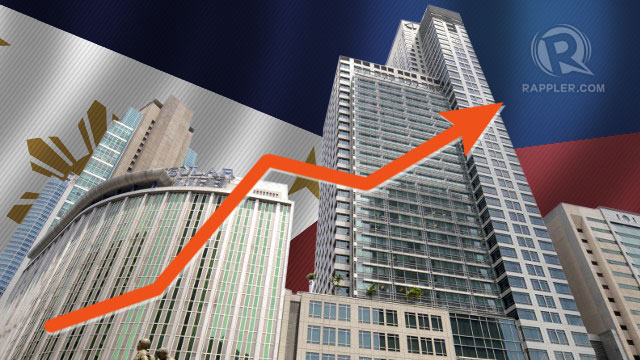SUMMARY
This is AI generated summarization, which may have errors. For context, always refer to the full article.

MANILA, Philippines (UPDATED) – The Asian Development Bank (ADB) expects Philippine economic growth to slow down to 6% in 2013 from 6.6% in 2012.
In its Asian Development Outlook released on Tuesday, April 9, the Manila-based multilateral lender said growth would ease further to 5.9% in 2014.
Nevertheless, the ADB said the growth projections are still “high” coming from a high base.
ADB Philippines Director Neeraj Jain said, “governance reforms and prudent macroeconomic management have laid the foundation for strong economic growth.”
“The recent investment grade rating affirms the improved macroeconomic fundamentals and investment environment. A stronger industrial base is vital for increasing jobs, and will help make growth inclusive and sustainable,” he added.
Growth drivers
ADB said growth would still be driven by “private consumption… underpinned by remittances and positive consumer sentiment.”
The services sector, which includes the business process outsourcing and tourism sectors, will also ensure growth.
The BPO sector is projected to grow 20% every year until 2016, while tourist arrivals have been steady, giving government confidence it will be able to achieve its target of 10 million foreign tourists by the end of the Aquino administration’s term.
Strong domestic spending for the mid-term elections and recovery of exports will also boost growth, said the ADB.
In January 2013, the National Statistics Office reported the country’s exports contracted 2.7% to $4.011 billion from $4.123 billion in January 2012. Exports to ASEAN-member countries accounted for 14.5% or $582.55 million.
“A projected pickup in exports of electronics will contribute to growth in merchandise exports in 2013. Rapidly growing Southeast Asian markets now buy 19% of the Philippines’ exports, up from just 13% in 2008. However, robust domestic demand suggests that imports will be considerably higher, so that net external demand weighs on GDP growth this year,” ADB said.
Manufacturing
The ADB said the Philippines could grow more by reviving the manufacturing sector.
It said this would require better infrastructure and an improved business environment that would attract investors to locate in the Philippines.
“Persistently high levels of unemployment and underemployment, with the latter at 20% of the labor force in 2012, remain a key concern. Continuous deployment of oversea workers masks the severity of the unemployment problem,” the ADB said. – Rappler.com
Add a comment
How does this make you feel?
There are no comments yet. Add your comment to start the conversation.